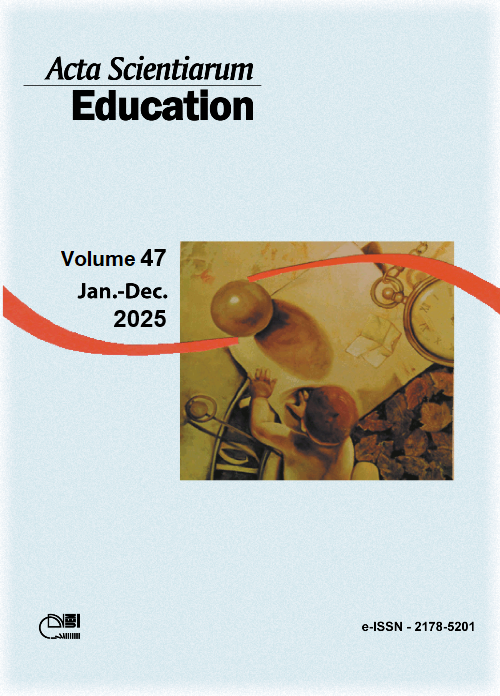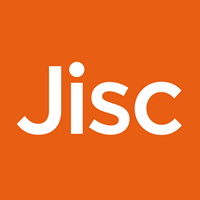Interdisciplinary research in a graduate program: what a South Brazilian corpus of mater’s theses tells us? (2015-2018)
Abstract
In this article, we seek to point out the status of interdisciplinarity within the scope of graduate research in Brazil, with the interest of realizing which interdisciplinarity we are talking about, and which possible interdisciplinarities can be operated in institutional scope of graduate studies, in the process of knowledge production, as well as in the weaving of final papers. We used a corpus of 105 master's theses defended between 2015 and 2018 in the Graduate Program in Interdisciplinary Community Development at Universidade Estadual do Centro-Oeste, Parana, Brazil as our dataset. We collate this corpus with a broader bibliographic discussion on the challenges of the institutionalization of interdisciplinarity in Brazil. The article points to the permanence of tensions between disciplinarity and interdisciplinarity, as well as to the need for continuity of reflective analysis on the issue within the interdisciplinary graduate programs.
Downloads
References
Academia Brasileira de Ciências [ABC]. (2004). Subsídios para a reforma da educação superior. Rio de Janeiro, RJ: ABC.
Almeida, J., Gerhardt, T. E., Miguel, L. A., Netto, C. G. A. M., Verdum, R., Beck, F. L., & Zanoni, M. (2004). Pesquisa interdisciplinar na pós-graduação: (des)caminhos de uma experiência em andamento. RBPG, 1(2), 116-140. DOI: https://doi.org/10.21713/2358-2332.2004.v1.44
APCN-PPGDC-Unicentro. (2017). Proposta APCN 2017. Guarapuava, PR: Unicentro.
Aurell, J. (2013). Comprender el pasado: una historia de la escritura y el pensamiento histórico. Barcelona, ES: Akal.
Barry, A., & Born, G. (2013). Interdisciplinarity: reconfigurations of the social and natural sciences. New York, NY: Routledge.
Callard, F., & Fitzgerald, D. (2015). Rethinking interdisciplinarity across the Social Sciences and Neurosciences. London, UK: Palgrave Macmillan.
Coordenação de Aperfeiçoamento de Pessoal de Nível Superior [Capes]. (2009). Documento de área 2009. Brasília, DF: Capes.Recuperado de https://www.gov.br/capes/pt-br/centrais-de-conteudo/INTER03ago10.pdf
Coordenação de Aperfeiçoamento de Pessoal de Nível Superior [Capes]. (2013). Documento de área 2013. Brasília, DF: Capes. Recuperado de https://bitily.me/QkEJc
Fazenda, I. C. A. (2017). Interdisciplinaridade: história, teoria e pesquisa. São Paulo, SP: Papirus.
Huutoniemi, K., Klein, J. T., Bruun, H., & Hukkinen, J. (2010). Analyzing interdisciplinarity: typology and indicators. Research Policy, 39(1), 79-88. DOI: https://doi.org/10.1016/j.respol.2009.09.011
Jacobs, J. (2014). In defense of disciplines: interdisciplinarity and specialization in the research university. Chicago, IL: The University of Chicago Press.
Jupiassu, H. (2006). O espírito interdisciplinar. Cadernos Ebate.BR, 4(3), 1-9.
Klein, J. T. (2000). A conceptual vocabulary of interdisciplinary Science. In P. Weingart, & N. Stehr (Orgs.), Practising interdisciplinarity (p. 3-24).Toronto, CA: University of Toronto Press.
Klein, J. T. (2010). Creating interdisciplinary campus cultures: a model for strengh and sustainability. San Francisco, CA: Jossey-Bass.
Klein, Julie T. (2005) Humanities, culture, and interdisciplinarity: the changing American academy. Albany: State University of New York Press.
Lima, J. C., & Cortes, S. M. V. (2013). A sociologia no Brasil e a interdisciplinaridade nas ciências sociais. Civitas, 13(3), 416-435.
Martin, D. (2011). Refletindo a formação interdisciplinar na pós-graduação. Saúde e Sociedade, 20(1), 57-65. DOI: https://doi.org/10.1590/S0104-12902011000100008
Menossi, M. J., Lima, R. A. G., & Corrêa, A. K. (2008). A dor e o desafio da interdisciplinaridade no cuidado à criança. Revista Latino-Americana de Enfermagem, 16(3), 1-6.
Moraes, M. C. (2010). Transdisciplinaridade e educação. Rizoma, 6. Recuperado de http://www.rizoma-freireano.org/articles-0606/transdisciplinaridade-e-educacao-maria-candida-moraes
Moran, J. (2002). Interdisciplinarity. London, UK: Routledge.
Morin, E. (2000). Os sete saberes necessários à educação do futuro. São Paulo, SP: Cortez.
Osborne P (2011). Philosophy after theory: Transdisciplinarity and the new. In: Elliott J, Attridge D (eds) Theory After ‘Theory’, London: Routledge, pp. 19–33.
Pereira, E. Q., & Nascimento, E. P. (2016). A interdisciplinaridade nas universidades brasileiras: trajetória e desafios. Redes, 21(1), 209-232.
Philippi Jr., A., & Pascutti, P. G. (2010). Documento de Área 2009. Recuperado de https://www.gov.br/capes/pt-br/centrais-de-conteudo/INTER03ago10.pdf.
Potthast, T. (2010). Epistemisch-moralische hybride und das problem interdisziplinärer Urteilsbildung. In M. Jungert, E. Romfeld, T. Sukopp, & U. Voigt (Orgs.), Interdisziplinarität: theorie, praxis, probleme (p. 174-191). Darmstadt, DE: Wissenschaftliche Buchgesellschaft.
Raynaut, C. (2014). Os desafios contemporâneos da produção do conhecimento: o apelo para interdisciplinaridade. Interthesis, 11(1), 1-22.
Santos, B. S. (1988). Um discurso sobre as ciências na transição para uma ciência pós-moderna. Estudos Avançados, 2(2), 46-71.
Satolo, V. P. (2016). A interdisciplinaridade em dois programas de pós-graduação em agronegócio. (Dissertação de Mestrado). Universidade Estadual Paulista Julio de Mesquisa Filho, Tupã.
Schmitt, V, Travassos, L. P., Fialho, F. A. P., & Remor, C. A. M. (2006). Interdisciplinaridade e pós-graduação. Revista de Biologia e Ciências da Terra, 6(2), 295-304.
Teixeira, O. A. (2004). Interdisciplinaridade: problemas e desafios. Revista Brasileira De Pós-Graduação, 1(1). Recuperado de https://rbpg.capes.gov.br/rbpg/article/view/22.
Wasserman, J. C. (2003). A visão interdisciplinar na Capes. Mundo e Vida: Alternativas para Estudos Ambientais, 4(2), 115-120.
Weingart, P., & Stehr, N. (2000). Practising interdisciplinarity. Toronto, CA: University of Toronto Press.

This work is licensed under a Creative Commons Attribution 4.0 International License.
DECLARATION OF ORIGINALITY AND COPYRIGHTS
I declare that this article is original and has not been submitted for publication in any other national or international journal, either in part or in its entirety.
The copyright belongs exclusively to the authors. The licensing rights used by the journal are the Creative Commons Attribution 4.0 (CC BY 4.0) license: sharing (copying and distributing the material in any medium or format) and adaptation (remixing, transforming, and building upon the material thus licensed for any purpose, including commercial purposes) are permitted.
It is recommended that you read this link for more information on the subject: providing credits and references correctly, among other crucial details for the proper use of the licensed material.














































